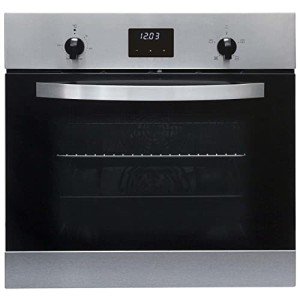Find Out What Ovens And Hobs Tricks The Celebs Are Using
Understanding Ovens and Hobs: A Comprehensive Guide
Cooking has actually come a long way since the days of open flames and primary cooking methods. Today, ovens and hobs are at the heart of contemporary kitchens, offering adaptability, effectiveness, and a range of cooking alternatives. Whether you are an amateur cook or an experienced chef, understanding the distinctions, features, and functions of these devices is essential for optimizing cooking potential. This short article breaks down the various types of ovens and hobs readily available on the market, their performances, and how to select the best devices for your kitchen.
What is an Oven?
An oven is an enclosed area developed for heating and cooking food, offering different techniques such as baking, roasting, and broiling. Ovens are available in various types, each serving distinct cooking choices and requirements.
Types of Ovens
Conventional Ovens:
- Use gas or electricity for heating.
- Typically include a heating aspect at the top and bottom.
- Ideal for basic baking tasks.
Convection Ovens:
- Use a fan to flow hot air, promoting even cooking.
- Suitable for baking, roasting, and reheating.
- Lowers cooking time and boosts taste.
Steam Ovens:
- Utilize steam to cook food while retaining wetness and nutrients.
- Outstanding for health-conscious cooking, such as vegetables and fish.
Microwave Ovens:
- Use electromagnetic radiation to heat food quickly.
- Best for reheating leftovers or cooking easy meals.
Wall Ovens:
- Built into the wall, conserving area in the kitchen.
- Available in various setups, including single or double ovens.
Key Features of Ovens
- Temperature level Control: Precision heating for various baking and cooking procedures.
- Self-Cleaning Options: Some models have self-cleaning modes that use high temperature levels to burn off food residue.
- Smart Features: Wi-Fi connectivity enables remote pre-heating, monitoring, and recipe management via smartphones.
What is a Hob?
A hob is a cooking surface area, typically referred to as a range or cooktop, where pots and pans is put for heating. Hobs are available in various materials, sizes, and heating techniques, accommodating varied cooking needs.
Types of Hobs
Gas Hobs:
- Utilize burner for direct flame cooking.
- Offer accurate temperature level control and are preferred by numerous expert chefs.
Electric Hobs:
- Use electric coils or smooth tops.
- Some designs are geared up with induction innovation, offering rapid heating through electro-magnetic energy.
Induction Hobs:
- Cookware needs to be made from magnetic materials.
- Extremely energy-efficient, supplying quick heat and minimizing burn dangers.
Ceramic Hobs:
- Feature a glass-ceramic surface area with heating elements below.
- Easy to clean however can be less energy-efficient than induction hobs.
Secret Features of Hobs
- Burner Configuration: Varies from 2 to six burners, depending on design and size.
- Power Levels: Multiple settings allow for greater accuracy in cooking.
- Security Features: Options like flame failure devices and child lock settings make sure safety throughout cooking.
Choosing the Right Oven and Hob
Selecting the ideal oven and hob for your kitchen involves mindful factor to consider of various factors. Below is a list of questions to assist your choice procedure:
- What is your primary cooking design?
- How much kitchen area do you have?
- What is your budget plan?
- Do you prefer gas or electric home appliances?
- Are additional functions like smart connection crucial to you?
Table Summary of Key Differences Between Ovens and Hobs
Feature
Oven
Hob
Functions
Baking, roasting, broiling
Boiling, frying, sautéing
Cooking Method
Confined heat
Direct cooking surface area
Temperature Control
Adjustable settings
Range settings
Types
Electric, gas, convection, microwave
Gas, electric, induction, ceramic
Cooking Capacity
Larger (can cook several meals)
Smaller (concentrate on instant cooking)
Cleaning
Self-cleaning choices readily available
Usually manual cleansing needed
Maintenance Tips for Ovens and Hobs
Appropriate care and upkeep of your cooking home appliances extend their life-span and effectiveness. Here are important maintenance pointers:
Regular Cleaning:
- Clean the oven interior after each use to avoid residue buildup.
- Clean down hob surface areas after preparing to prevent discolorations.
Inspect Seals:
- Ensure the oven door seals are intact to preserve energy performance.
- Replace worn-out gaskets and seals as required.
Check Burners and Elements:
- For gas hobs, look for clogs in burners.
- For electric hobs, examine coils and surfaces for signs of wear.
Frequently asked questions
Can I use any pots and pans on induction hobs?
- No, induction hobs only deal with magnetic pots and pans, such as cast iron or stainless-steel.
What is the most energy-efficient cooking device?
- Induction hobs are generally the most energy-efficient alternative, using less energy than standard gas or electric models.
How often should I clean my oven?
- It's suggested to clean your oven every few months, or more frequently if you use it typically.
Can I set up an oven and hob individually?
- Yes, both appliances can be installed separately based on kitchen style and area.
What should I think about when setting up a gas hob?
- Guarantee appropriate ventilation and comply with local safety codes. It is recommended to have a professional set up gas devices.
Understanding the functions, types, and upkeep of ovens and hobs can considerably improve your cooking experiences. Choosing the ideal appliances tailored to your cooking style, kitchen area, and security needs can make all the distinction in accomplishing cooking success. By being informed about Ovens And Hobs , you can enjoy a more efficient and satisfying cooking journey, bringing tasty meals to your table with ease.
